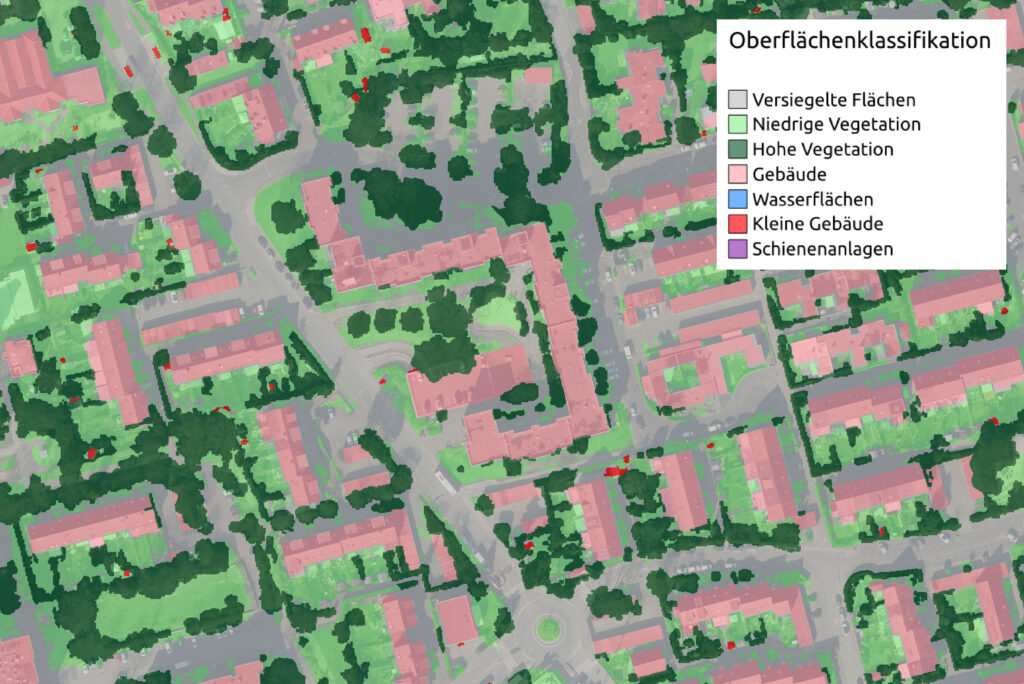Land conversion, i.e. the conversion of natural open spaces into settlement and traffic areas, is a key issue in the context of climate change and sustainable urban development. When forests, meadows or other natural landscapes have to make way for residential and industrial areas, this has far-reaching effects on the environment, especially on carbon storage and the emission of greenhouse gases.
Against this background, Gertz Gutsche Rümenapp (GGR ), in cooperation with the Öko-Institut, is investigating the greenhouse gas effects of such land conversions on behalf of the Federal Environment Agency. The aim of the project is to provide precise estimates of how carbon storage and the annual carbon absorption capacity per hectare change as a result of the conversion of open spaces into settlement and traffic areas.
To this end, modern methods of automated surface classification are used, which make it possible to identify and analyze different types of areas such as buildings, roads, gardens, forests and meadows. A comprehensive evaluation of a large sample of existing settlement areas, based on data sources such as aerial photographs, forms the empirical basis of this study.

